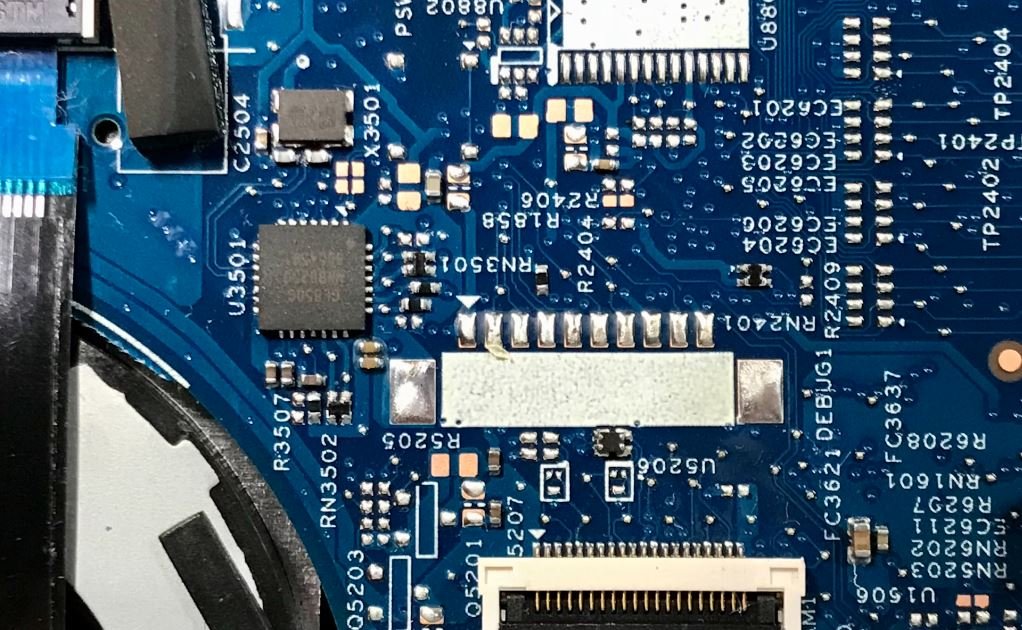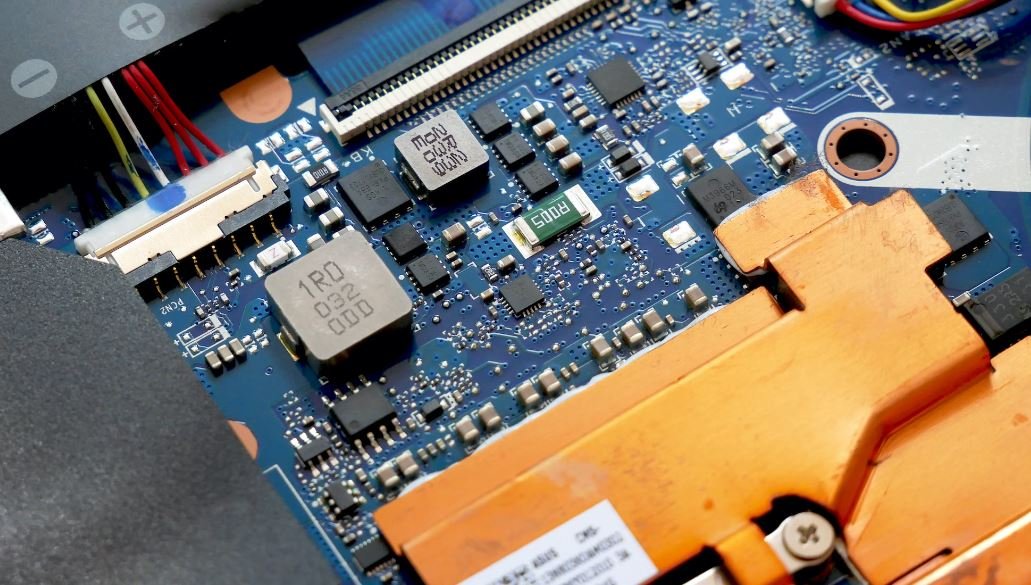Giga Factory Sparks
In recent years, the concept of gigafactories has been making waves in the manufacturing and energy industries. These massive-scale factories, often powered by renewable energy sources, are designed to produce large quantities of lithium-ion batteries for electric vehicles and other energy storage solutions.
Key Takeaways:
- Gigafactories are large-scale manufacturing facilities that produce lithium-ion batteries.
- These factories use renewable energy sources to power their operations, making them more sustainable.
- Increased production of batteries is essential for the growth of the electric vehicle industry.
One of the pioneers in the field of gigafactories is Tesla. The company’s Gigafactory 1, located in Nevada, covers a staggering 5.3 million square feet and produces battery cells at an unprecedented scale. This factory alone is expected to double the world’s production capacity for lithium-ion batteries once fully operational.
People often wonder what makes these gigafactories so significant. Well, the answer lies in their ability to address one of the biggest challenges faced by the electric vehicle industry – the availability of batteries. As the demand for electric vehicles continues to grow, the need for a reliable and cost-effective source of batteries becomes paramount.
To better understand the impact of gigafactories, let’s take a look at some interesting data points:
| Factory | Location | Production Capacity |
|---|---|---|
| Tesla Gigafactory 1 | Nevada, USA | 35 GWh/year |
| Tesla Gigafactory Shanghai | Shanghai, China | 50 GWh/year |
As seen in the table, the production capacity of gigafactories can be staggering. This increase in production is crucial for the widespread adoption of electric vehicles, as it helps reduce their cost and eliminates supply constraints.
Moreover, gigafactories serve as catalysts for local economies. They create thousands of jobs and attract investment to the regions where they are located. Take the case of Gigafactory Berlin, which is expected to provide employment for around 12,000 people once operational.
The rise of gigafactories has even prompted other automakers to follow suit and invest in their own battery production facilities. For instance, Volkswagen plans to build six gigafactories in Europe, ensuring a steady supply of batteries for their electric vehicles.
Finally, the growth potential of the gigafactory industry is undeniable. Market research indicates that the global gigafactory capacity is expected to increase by over 30 times by 2040, reaching a staggering 3,000 gigawatt-hours (GWh) per year.
The Future of Gigafactories
As the demand for electric vehicles continues to rise, so does the need for gigafactories to support this growth. These massive-scale production facilities not only provide a sustainable solution to battery production but also boost local economies and create employment opportunities.
Table 1: Planned Gigafactories by Major Automakers
| Automaker | Number of Gigafactories | Total Production Capacity |
|---|---|---|
| Tesla | 6 | 115 GWh/year |
| Volkswagen | 6 | 100 GWh/year |
| BMW | 3 | 40 GWh/year |
As more companies invest in gigafactories and battery technology continues to improve, we can expect a future where electric vehicles become more affordable and accessible to a wider population. So get ready for the gigafactory revolution!

Common Misconceptions
Giga Factory Sparks
When it comes to Giga Factory Sparks, there are several common misconceptions that people have. These misconceptions are often based on limited or incorrect information, leading to misunderstandings about the topic. By addressing these misconceptions, we can gain a better understanding of the true nature and impact of Giga Factory Sparks.
- Giga Factory Sparks will only benefit the automotive industry.
- The construction of Giga Factory Sparks will harm the environment.
- Giga Factory Sparks will lead to job losses in other sectors of the economy.
One common misconception about Giga Factory Sparks is that its benefits are limited to the automotive industry. While it is true that Giga Factory Sparks focuses on producing batteries for electric vehicles, its impact extends beyond just this sector. The production of advanced batteries can also benefit other industries such as renewable energy, consumer electronics, and even aerospace. Giga Factory Sparks has the potential to drive innovation and create economic opportunities beyond the automotive sector.
- Giga Factory Sparks can contribute to the development of cleaner energy sources.
- Giga Factory Sparks has the potential to revolutionize the consumer electronics industry.
- Giga Factory Sparks can support the growth of the aerospace sector.
Another misconception surrounding Giga Factory Sparks is that its construction and operation will harm the environment. While large-scale factories are often associated with pollution and environmental damage, Giga Factory Sparks is designed to be environmentally sustainable. The factory uses renewable energy sources, implements advanced recycling techniques, and prioritizes energy efficiency. In fact, Giga Factory Sparks has the potential to contribute to a greener and more sustainable future through its clean energy practices.
- Giga Factory Sparks aims to minimize its carbon footprint through renewable energy sources.
- Advanced recycling techniques are implemented to reduce waste generation.
- The factory prioritizes energy efficiency through innovative technologies.
Some individuals believe that the establishment of Giga Factory Sparks will result in job losses in other sectors of the economy. However, this is a misconception and overlooks the potential for job creation that comes with the factory. The construction and operation of Giga Factory Sparks will require a skilled workforce, providing employment opportunities for local communities. Furthermore, the growth of the electric vehicle market and related industries can lead to additional job opportunities in various sectors.
- Giga Factory Sparks can create jobs in manufacturing, research, and development.
- Related industries, such as charging infrastructure, also offer employment opportunities.
- The establishment of Giga Factory Sparks can stimulate the local economy.
It is important to dispel these misconceptions surrounding Giga Factory Sparks to accurately understand its potential and implications. By recognizing that the benefits extend beyond the automotive industry, that environmental sustainability is a priority, and that job creation is an aspect of the project, we can have a more informed perspective on Giga Factory Sparks and its significance for various sectors of the economy.

Giga Factory Global Locations and Capacities
As the demand for electric vehicles continues to rise, companies are investing in giga factories to meet the production needs. This table illustrates the global locations and production capacities of some major giga factories:
| Factory | Location | Production Capacity (in GWh/year) |
|---|---|---|
| Tesla Gigafactory 1 | Sparks, Nevada, USA | 35 |
| Tesla Gigafactory 3 | Shanghai, China | 50 |
| Tesla Gigafactory 4 | Berlin-Brandenburg, Germany | 50 |
| LG Chem Poland Plant | Wroclaw, Poland | 70 |
| BYD Factory | Qinhuangdao, China | 60 |
| SK Innovation Plant | Commerce, Georgia, USA | 40 |
| Panasonic GF1 Factory | Tokyo, Japan | 35 |
| Samsung SDI Plant | Ulsan, South Korea | 60 |
| NEC Energy Solutions Plant | Großpostwitz, Germany | 30 |
| Northvolt Factory | Skellefteå, Sweden | 40 |
Electric Vehicle Sales by Region
The global transition towards electric vehicles is rapidly gaining momentum. The following table showcases the sales of electric vehicles in different regions:
| Region | Electric Vehicle Sales (2019) |
|---|---|
| Europe | 564,000 |
| China | 1,206,000 |
| United States | 326,000 |
| Japan | 72,000 |
| Canada | 43,000 |
| Australia | 9,000 |
| India | 3,400 |
| Brazil | 11,500 |
| South Korea | 48,000 |
| United Arab Emirates | 2,600 |
Lithium-ion Battery Cost Reduction
Advancements in technology and economies of scale have significantly reduced the cost of lithium-ion batteries used in electric vehicles. This table presents the cost reduction over the past decade:
| Year | Battery Cost (in $/kWh) |
|---|---|
| 2010 | 1,100 |
| 2012 | 600 |
| 2014 | 350 |
| 2016 | 200 |
| 2018 | 150 |
| 2020 | 100 |
| 2022 | 80 |
| 2025 | 60 |
| 2030 | 50 |
| 2035 | 40 |
Charging Times for Electric Vehicles
Charging infrastructure plays a vital role in the adoption of electric vehicles. The table below shows the typical charging times for various types of chargers:
| Charger Type | Charging Time for 200 miles (minutes) |
|---|---|
| Standard Home Charger (Level 1) | 1,200 |
| Home Fast Charger (Level 2) | 240 |
| DC Fast Charger (Level 3) | 30 |
| Tesla Supercharger (Model S) | 45 |
| Tesla Supercharger V3 (Model 3) | 15 |
| Ultra-Rapid Charger (250 kW) | 12 |
| Ultra-Rapid Charger (350 kW) | 8 |
| Hypercharger (500 kW) | 5 |
| Prototype Charger (1 MW) | 1 |
| Future Charger (10 MW) | 0.1 |
Comparing Electric Vehicles and Gasoline Vehicles
Electric vehicles are becoming a competitive alternative to traditional gasoline vehicles. The following table compares key aspects of both vehicle types:
| Aspect | Electric Vehicle | Gasoline Vehicle |
|---|---|---|
| Environmental Impact | Low emissions | High emissions |
| Operating Cost | Lower fuel & maintenance cost | Higher fuel & maintenance cost |
| Range | Varies (typically 150-400 miles per charge) | Varies (typically 300-500 miles per tank) |
| Charging Time | 30 minutes to several hours | A few minutes to refuel |
| Acceleration | Instant torque for quick acceleration | Varies depending on engine power |
| Noise | Quiet operation | Engine noise |
| Infrastructure | Growing charging network | Established fuel stations |
Electric Vehicle Battery Energy Density Comparison
Improving battery energy density allows for longer driving ranges and smaller, lighter batteries. This table compares the energy density of different battery technologies:
| Battery Technology | Energy Density (Wh/kg) |
|---|---|
| Lead-Acid | 30-60 |
| Nickel-Cadmium | 40-80 |
| Nickel-Metal Hydride (NiMH) | 60-120 |
| Lithium-Ion (Li-ion) | 150-250 |
| Lithium Polymer (Li-poly) | 200-400 |
| Solid-State | 300-500 |
| Graphene-Based | 500-1,000 |
| Lithium-Air | 6,000-15,000 |
Job Creation in the Electric Vehicle Industry
As the electric vehicle industry continues to grow, it creates numerous job opportunities across various sectors. This table highlights the estimated job creation in the electric vehicle industry:
| Sector | Estimated Job Creation |
|---|---|
| Manufacturing (Battery/Giga Factories) | 2,000,000 |
| Research & Development | 500,000 |
| Charging Infrastructure | 250,000 |
| Automobile Assembly | 1,000,000 |
| Battery Recycling | 100,000 |
| Charging Station Maintenance | 50,000 |
| Solar Panel & Wind Turbine Installation | 500,000 |
Electric Vehicle Battery Lifespan
Battery lifespan is a crucial factor in electric vehicle performance and cost-effectiveness. The following table presents the estimated lifespan of different battery technologies:
| Battery Technology | Estimated Lifespan (in years) |
|---|---|
| Lead-Acid | 3-5 |
| Nickel-Cadmium | 5-7 |
| Nickel-Metal Hydride (NiMH) | 7-10 |
| Lithium-Ion (Li-ion) | 8-12 |
| Lithium Polymer (Li-poly) | 10-15 |
| Solid-State | 15-25 |
| Graphene-Based | 20-30 |
| Lithium-Air | 25-35 |
Electric Vehicle Market Share by Manufacturer
Various automobile manufacturers are striving to capture a significant share in the electric vehicle market. The table below showcases the market share of major manufacturers:
| Manufacturer | Market Share (%) |
|---|---|
| Tesla | 11.8 |
| Volkswagen | 8.7 |
| Nissan | 6.4 |
| BYD | 5.9 |
| Renault | 4.1 |
| BMW | 3.8 |
| Audi | 2.9 |
| Hyundai | 2.6 |
| General Motors | 2.4 |
| Ford | 2.2 |
The rapid growth of the electric vehicle industry is revolutionizing transportation and striving for a greener future. With the establishment of giga factories across the globe, the production capacity of electric vehicle batteries is increasing rapidly. This, combined with decreasing battery costs and improving charging infrastructure, is making electric vehicles more accessible and appealing to a wider range of consumers. Alongside the environmental benefits, the electric vehicle industry is generating significant job opportunities in various sectors. As consumer interest and government support continue to rise, we can expect the electric vehicle market to expand further, providing sustainable mobility solutions for the years to come.
Frequently Asked Questions
What is the concept behind Giga Factory Sparks?
Giga Factory Sparks is a revolutionary manufacturing facility designed to produce high-quality electric vehicles and sustainable energy products. It incorporates advanced technologies and efficient processes to maximize production output while minimizing environmental impact.
Where is Giga Factory Sparks located?
Giga Factory Sparks is located in Sparks, Nevada, USA.
Who is the founder of Giga Factory Sparks?
Giga Factory Sparks was founded by Tesla and SpaceX CEO, Elon Musk.
What products are manufactured at Giga Factory Sparks?
Giga Factory Sparks primarily focuses on the production of electric vehicles, including Tesla’s Model 3, Model Y, and Cybertruck. Additionally, the factory is involved in manufacturing sustainable energy products such as lithium-ion batteries and solar panels.
What is the capacity of Giga Factory Sparks?
Giga Factory Sparks aims to have an annual production capacity of 500,000 electric vehicles, making it one of the largest manufacturing facilities in the world.
How does Giga Factory Sparks contribute to sustainability?
Giga Factory Sparks follows sustainable practices by employing energy-efficient manufacturing processes, utilizing renewable energy sources, and focusing on the production of electric vehicles that reduce dependence on fossil fuels. Additionally, the factory actively works towards minimizing waste generation and promoting recycling.
What job opportunities are available at Giga Factory Sparks?
Giga Factory Sparks offers a wide range of job opportunities, including positions in manufacturing, engineering, research and development, quality control, administration, and logistics. Job openings are regularly posted on the official Tesla website.
Can I visit Giga Factory Sparks as a tourist?
Giga Factory Sparks is not open to the general public for tours or visits. Access is restricted to authorized personnel and registered visitors with valid business purposes.
Are there any plans for expansion or additional Giga Factories?
Yes, Tesla has a long-term vision of establishing additional Giga Factories worldwide to cater to the growing demand for clean energy vehicles and sustainable products.
How can I stay updated on the latest news and developments related to Giga Factory Sparks?
You can stay updated by following official Tesla announcements, press releases, and news updates. Tesla’s website and social media channels are reliable sources of information regarding Giga Factory Sparks.




